|
|
 |
|
February 26, 2013
The still relatively small world of wine journalism has been atwitter lately over the future of wine criticism. There has been both elation and angst, triggered by the news that the world's most prominent wine critic, Robert Parker, had sold an interest in The Wine Advocate, his closely watched newsletter, to a group from Singapore.
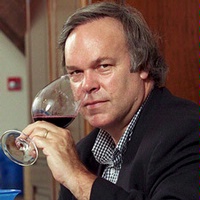 There is little doubt that Parker, at 65, is beginning to wind down a brilliant career. Prior to the sale, he had already announced he would narrow his focus to the areas that most interest him, Bordeaux and the Rhone Valley, two wine regions in France that owe a great deal of their current worldwide popularity to Parker's palate and enthusiasm. There is little doubt that Parker, at 65, is beginning to wind down a brilliant career. Prior to the sale, he had already announced he would narrow his focus to the areas that most interest him, Bordeaux and the Rhone Valley, two wine regions in France that owe a great deal of their current worldwide popularity to Parker's palate and enthusiasm.
Reaction to the sale of The Wine Advocate and Parker's retreat has been nothing if not curious. A new generation of wine journalists has long envied Parker's influence, and loudly applauded what is seen in some circles as the end of the Parker era. One wine blogger, my colleague W. Blake Gray, has gone so far as to post odds on the "next" Robert Parker.
Not so fast. Over the past three decades, Robert Parker has been a kingmaker with his popular but controversial 100-point scale. He came to prominence in 1983 with audacious praise for the 1982 vintage of Bordeaux. He filled a void with reviews that were bold and provocative at a time when serious wine critics were few and far between, and wine writing in general was often little more than genteel puffery.
Parker was effusive about the wines he loved, but equally passionate and expressive when he took a chateau to task for underperforming. His style was bold, honest and refreshing, and it was quickly embraced by the wine trade as a tool to increase sales.
It was a time in America when solid information about wine was scant, although curiosity about wine was growing. France was dominant, but California was beginning to emerge in the market, and there was genuine need for a reliable voice consumers could trust.
Robert Parker was the right person in the right place at the right time. That world no longer exists.
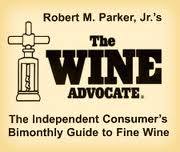 Today, largely due to the Internet, there is a cacophony of wine advice. A merchant looking to utilize a shelf-talker to promote sales of a particular wine now has multiple options. The Wine Advocate and to a lesser extent The Wine Spectator remain the preferred media in wine promotion, but the choice is no longer as clear-cut as it once was. Other voices have emerged and will continue to emerge. Today, largely due to the Internet, there is a cacophony of wine advice. A merchant looking to utilize a shelf-talker to promote sales of a particular wine now has multiple options. The Wine Advocate and to a lesser extent The Wine Spectator remain the preferred media in wine promotion, but the choice is no longer as clear-cut as it once was. Other voices have emerged and will continue to emerge.
There are literally dozens of wine journalists with the talent and work ethic to be the next Robert Parker. But the day when one person can toss out a number and put an obscure winery on the map, or inspire a stampede at the checkout counter, is all but over.
When RP does finally retire, it will mark the end of an era — the Robert Parker era.
I wouldn't look for another RP anytime soon.
Posted by Robert Whitley at 2:02 PM
|
|
February 23, 2013
Critics Challenge celebrates its 10th anniversary in June with what is arguably the strongest team of judges in its history.
This unique international wine competition brings together many of wine journalism's finest palates each year to evaluate thousands of wines submitted from around the world. The competition publishes each judge's tasting notes on the winning wines, lending Critics Challenge a level of transparency no other major wine competition can claim.
The blockbuster lineup for Critics Challenge X was released this week. I believe you will agree it is an extraordinary group.
Chief Judges
Mary Ewing-Mullian, MW
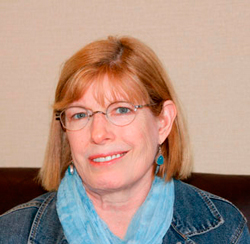 Mary was the first woman to earn certification as a Master of Wine and is co-author of Wine for Dummies and numerous other wine books, as well as Director of the International Wine Center in New York City since 1984. Mary also writes frequently for newspapers and magazines and travels the world extensively in the course of covering wine. She is an experienced and sought-after wine judge and has been Chief Judge of Critics Challenge since its inception. Mary was the first woman to earn certification as a Master of Wine and is co-author of Wine for Dummies and numerous other wine books, as well as Director of the International Wine Center in New York City since 1984. Mary also writes frequently for newspapers and magazines and travels the world extensively in the course of covering wine. She is an experienced and sought-after wine judge and has been Chief Judge of Critics Challenge since its inception.
Robert Whitley
 Robert writes the syndicated Wine Talk column for Creators Syndicate and is publisher of the online publication Wine Review Online. Robert’s columns have appeared in newspapers and magazines from coast to coast, and he also contributes columns and reviews to Wine Review Online. Robert is Director of the San Diego International, Winemaker Challenge and Sommelier Challenge wine competitions in addition to the Critics Challenge. This year Robert also is scheduled to judge at the Conocurs Mondial de Bruxelles, the Dallas Morning News TexSomm, and the Sunset International wine competitions. Robert writes the syndicated Wine Talk column for Creators Syndicate and is publisher of the online publication Wine Review Online. Robert’s columns have appeared in newspapers and magazines from coast to coast, and he also contributes columns and reviews to Wine Review Online. Robert is Director of the San Diego International, Winemaker Challenge and Sommelier Challenge wine competitions in addition to the Critics Challenge. This year Robert also is scheduled to judge at the Conocurs Mondial de Bruxelles, the Dallas Morning News TexSomm, and the Sunset International wine competitions.
Judges
Michael Apstein
 Michael is a regular contributor to Wine Review Online, which publishes his reviews and columns. While a wine columnist for the Boston Globe he was nominated for a prestigious James Beard award, and his articles have appeared in many publications, including the wine section of the San Francisco Chronicle. Michael has judged at all of the previous nine Critics Challenges. Michael is a regular contributor to Wine Review Online, which publishes his reviews and columns. While a wine columnist for the Boston Globe he was nominated for a prestigious James Beard award, and his articles have appeared in many publications, including the wine section of the San Francisco Chronicle. Michael has judged at all of the previous nine Critics Challenges.
Jon Bonne
.jpg) Jon is Editor of the San Francisco Chronicle wine section and a prolific writer and reviewer. Prior to his tenure at the Chronicle, Jon wrote on wine for MSNBC.com. Jon judges at numerous wine competitions, including the San Francisco Chronicle wine competition that kicks off the wine competition season each year. This will be his fifth appearance as a judge at the Critics Challenge. Jon is Editor of the San Francisco Chronicle wine section and a prolific writer and reviewer. Prior to his tenure at the Chronicle, Jon wrote on wine for MSNBC.com. Jon judges at numerous wine competitions, including the San Francisco Chronicle wine competition that kicks off the wine competition season each year. This will be his fifth appearance as a judge at the Critics Challenge.
Stephen Brook
.jpg) Stephen is a London-based columnist and blogger for Decanter and a noted wine-book author with multiple works to his credit, including Bordeaux: People, Power and Politics; The Wines of California; and Liquid Gold: Dessert Wines of the World. Stephen judges numerous international wine competitions in Europe and has judged at all nine Critics Challenges. Stephen is a London-based columnist and blogger for Decanter and a noted wine-book author with multiple works to his credit, including Bordeaux: People, Power and Politics; The Wines of California; and Liquid Gold: Dessert Wines of the World. Stephen judges numerous international wine competitions in Europe and has judged at all nine Critics Challenges.
Katherine Cole
.jpg) Katherine writes a weekly wine column for the Portland Oregonian and is author of Voodoo Vintners, which delves into the mysterious realm of biodynamic winemaking. Katherine is currently working on her second book, a sweeping look at wines around the globe. This will be her third appearance as a judge at Critics Challenge. Katherine writes a weekly wine column for the Portland Oregonian and is author of Voodoo Vintners, which delves into the mysterious realm of biodynamic winemaking. Katherine is currently working on her second book, a sweeping look at wines around the globe. This will be her third appearance as a judge at Critics Challenge.
Laurie Daniel
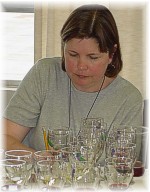 Laurie has written on wine for the San Jose Mercury News for the past two decades and is recognized as an expert on California wine. She has judged numerous wine competitions through the years, including the prestigious Concours Mondial de Bruxelles, and the Monterey Wine Competition. This will be Laurie’s debut at Critics Challenge. Laurie has written on wine for the San Jose Mercury News for the past two decades and is recognized as an expert on California wine. She has judged numerous wine competitions through the years, including the prestigious Concours Mondial de Bruxelles, and the Monterey Wine Competition. This will be Laurie’s debut at Critics Challenge.
Michael Franz
.jpg) Michael is Editor of Wine Review Online. In addition to those duties, he contributes columns and reviews to WRO and also writes for France Magazine. Michael was wine columnist for the Washington Post for more than a decade before joining Wine Review Online. Michael also organizes the annual Wine for Oysters competition in Washington, D.C., and is Chief Judge of the San Diego International wine competition. Michael is Editor of Wine Review Online. In addition to those duties, he contributes columns and reviews to WRO and also writes for France Magazine. Michael was wine columnist for the Washington Post for more than a decade before joining Wine Review Online. Michael also organizes the annual Wine for Oysters competition in Washington, D.C., and is Chief Judge of the San Diego International wine competition.
W. Blake Gray
 Blake is a regular contributor to Wine Review Online and authors The Gray Report wine blog. Blake was a reporter covering wine for the San Francisco Chronicle before striking out on his own a number of years ago. Blake judges at numerous important international wine competitions, including the Concours Mondial de Bruxelles. Blake is a regular contributor to Wine Review Online and authors The Gray Report wine blog. Blake was a reporter covering wine for the San Francisco Chronicle before striking out on his own a number of years ago. Blake judges at numerous important international wine competitions, including the Concours Mondial de Bruxelles.
Paul Lukacs
 Paul’s latest book, Inventing Wine, was released just before Christmas to critical acclaim. His first book, American Vintage, the Rise of American Wine, was nominated for a prestigious James Beard award. Paul is a regular contributor to Wine Review Online as well as numerous national publications. Paul also organizes the annual Wine for Oysters competition in Washington, D.C., along with colleague Michael Franz. Paul’s latest book, Inventing Wine, was released just before Christmas to critical acclaim. His first book, American Vintage, the Rise of American Wine, was nominated for a prestigious James Beard award. Paul is a regular contributor to Wine Review Online as well as numerous national publications. Paul also organizes the annual Wine for Oysters competition in Washington, D.C., along with colleague Michael Franz.
Ed McCarthy
Ed is co-author of Wine for Dummies and solo author of Champagne for Dummies and numerous other wine books.
Ed's broad experience with wines the world over is invaluable in an important international wine competition, and he has judged at every one of the previous nine Critics Challenges. Ed also writes a column for Wine Review Online.
Linda Murphy
.jpg) Linda recently came out with a new book, American Wine, in collaboration with Jancis Robinson, MW. Linda is the former Editor of the San Francisco Chronicle wine section and currently writes on wine for Decanter and Wine Review Online. Linda and Jancis are touring the United States extensively this spring and summer to promote American Wine. Linda recently came out with a new book, American Wine, in collaboration with Jancis Robinson, MW. Linda is the former Editor of the San Francisco Chronicle wine section and currently writes on wine for Decanter and Wine Review Online. Linda and Jancis are touring the United States extensively this spring and summer to promote American Wine.
Rebecca Murphy
.jpg) Rebecca is wine columnist for the Dallas Morning News and Director of the Dallas Morning News TexSomm wine competition. Rebecca also is the person behind the scenes at several other major wine competitions, including the Sunset Magazine International Wine Competition. Rebecca is wine columnist for the Dallas Morning News and Director of the Dallas Morning News TexSomm wine competition. Rebecca also is the person behind the scenes at several other major wine competitions, including the Sunset Magazine International Wine Competition.
Nick Passmore
Nick writes a weekly wine column for BusinessWeek.com and is Artisanal editor for Four Seasons Magazine. Over the years his work has appeared in numerous national magazines and online publications and he blogs regularly at NickOnWine.com.
Joe Roberts
 Joe is the talented, eccentric and downright infamous 1WineDude, a wine blogger extraordinaire who makes tasting wine – and reading about tasting wine – relaxed, fun and entertaining. Joe also writes a wine column for Playboy.com. This will be his first trip west (Joe is based in Philadelphia) to participate in the Critics Challenge. Joe is the talented, eccentric and downright infamous 1WineDude, a wine blogger extraordinaire who makes tasting wine – and reading about tasting wine – relaxed, fun and entertaining. Joe also writes a wine column for Playboy.com. This will be his first trip west (Joe is based in Philadelphia) to participate in the Critics Challenge.
Leslie Sbrocco
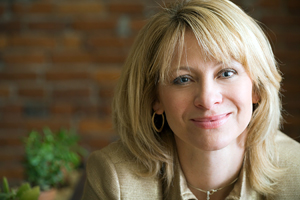 Leslie is perhaps the most entertaining personality in the world of wine media. She’s an award-winning author (Wine for Women and The Simple & Savvy Wine Guide), television host (Check Please, a popular PBS show in San Francisco) and multimedia star as The Thirsty Girl. Leslie also makes frequent appearances on The Today Show to chat about wine. She is currently working on her third book, Adventures of a Thirsty Girl. Leslie is perhaps the most entertaining personality in the world of wine media. She’s an award-winning author (Wine for Women and The Simple & Savvy Wine Guide), television host (Check Please, a popular PBS show in San Francisco) and multimedia star as The Thirsty Girl. Leslie also makes frequent appearances on The Today Show to chat about wine. She is currently working on her third book, Adventures of a Thirsty Girl.
Sara Schneider
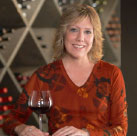 Sara is Wine Editor of Sunset Magazine, where she also covers wine-travel topics and oversees the Sunset International wine competition. Sara has also held the position of Food Editor at Sunset. She has twice been nominated for a prestigious James Beard award. Sara was a wine judge last year at the Concours Mondial de Bruxelles. Sara is Wine Editor of Sunset Magazine, where she also covers wine-travel topics and oversees the Sunset International wine competition. Sara has also held the position of Food Editor at Sunset. She has twice been nominated for a prestigious James Beard award. Sara was a wine judge last year at the Concours Mondial de Bruxelles.
Bruce Schoenfeld
Bruce is Wine & Spirits Editor for Travel + Leisure. Prior to T&L he was a contributor to The Wine Spectator for a dozen years, and before that a rising star as a sportswriter for a number of different newspapers. Bruce is an avid collector of Barolo and Bordeaux, and has a rich background in Spanish wine after living in Spain for a number of years.
Jeff Siegel
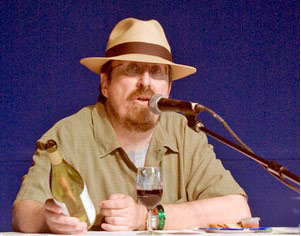 Jeff is The Wine Curmudgeon, an eclectic and very popular wine blog that emphasizes affordable wines. Based in the Dallas-Fort Worth area, Jeff was wine columnist for the Fort Worth Star-Telegram. Jeff is currently working on a book about affordable wines, which are clearly his passion. Jeff is The Wine Curmudgeon, an eclectic and very popular wine blog that emphasizes affordable wines. Based in the Dallas-Fort Worth area, Jeff was wine columnist for the Fort Worth Star-Telegram. Jeff is currently working on a book about affordable wines, which are clearly his passion.
Marguerite Thomas
Marguerite is a columnist and reviewer for Wine Review Online. Marguerite has written previously for the Los Angeles Times and a number of national wine magazines.
Deborah Parker-Wong
.jpg) Deborah is Northern California Editor for The Tasting Panel magazine and a frequent judge at important international wine competitions. She has a WSET diploma and is a member of the Circle of Wine Writers (London) and the Wine Media Guild (New York). Deborah is a frequent contributor to Sommelier Journal and other nationally distributed wine and spirits publications. This will be her second appearance at Critics Challenge. Deborah is Northern California Editor for The Tasting Panel magazine and a frequent judge at important international wine competitions. She has a WSET diploma and is a member of the Circle of Wine Writers (London) and the Wine Media Guild (New York). Deborah is a frequent contributor to Sommelier Journal and other nationally distributed wine and spirits publications. This will be her second appearance at Critics Challenge.
Wilfred Wong
Wilfred, who has been writing about wine for national publications for more than three decades, recently added his considerable talents to the stable of wine reviewers at Wine Review Online. Wilfred probably judges more wine competitions than any other person alive, and travels the globe extensively in pursuit of interesting and outstanding wines for the national chain Beverages & More (BevMo), where he has been Cellar Master since 1995.
|
|
February 12, 2013
Creators Syndicate
It would seem the Italian renaissance in wine
is old news. Antinori, Gaja, Banfi, and the wave of so-called “flying”
winemakers saw to that. Or so we thought.
Not so fast I say. There are
still stories to be told. The once woebegone Bolla is making noise in the north
of Italy, and down near the boot of Italy Feudi di San Gregorio has ushered in
the rise of the wines of the south. Sicily, an island unto itself, has witnessed
a generational change in winemaking and finally caught up to the Mainland in
quality.
.jpg) Then there is Tuscany, ground that has been ploughed and ploughed
again as the rules of the game have changed. Tuscan producers have had it
relatively easy through the years because Chianti once stood for quality in
Italian wine. That was until the visionary Piero Antinori demonstrated what
quality truly meant, what it looked like, and most of all what it tasted
like. Then there is Tuscany, ground that has been ploughed and ploughed
again as the rules of the game have changed. Tuscan producers have had it
relatively easy through the years because Chianti once stood for quality in
Italian wine. That was until the visionary Piero Antinori demonstrated what
quality truly meant, what it looked like, and most of all what it tasted
like.
As the bar was raised, many Tuscan producers were left behind. The
smart ones, however, understood that as more was expected they would not be able
to compete unless they upped their game. The house of Cecchi, under the
leadership of fourth-generation winemaker Andrea Cecchi, got it.
The
family winery, with its Villa Cerna estate in Castellina-in-Chianti in the heart
of the Chianti Classico region, and its Val delle Rose property in Scansano, in
the much warmer Tuscan district known as the Maremma, and a few smaller
properties, has steadily moved forward on the quality front over the past decade
or more. The results of Cecchi’s dedication in the vineyards and the cellar are
now obvious for all to see, which explains Andrea’s recent presence on a tour of
the United States.
He was here for the Gambero Rosso “Tre Bicchieri”
tastings, a series of exhibitions to show off all of the Italian wines that had
been awarded tre bicchieri, three glasses, in the publication’s most recent
annual ranking of Italian wines. Gambero Rosso is Italy’s equivalent of The Wine
Spectator, the widely watched U.S. wine publication that generates quite a buzz
each year with its list of the Top 100 wines of the year.
Where The Wine
Spectator ranks wines on a 100-point scale, Gambero Rosso issues one, two or
three bicchieri for its recommended wines (most wines, it should be noted,
receive no bicchieri from Gambero Rosso). Cecchi’s 2008 Villa Cerna Chianti
Classico Riserva was Andrea’s ticket to the Gambero Rosso tour this year, and
the tre bicchieri was a well-deserved kudo for a superb Chianti from a house
that hasn’t always done so well.
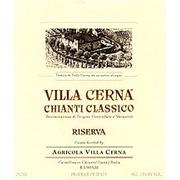 The Cecchi
wines were once renowned for their earthy, rustic quality, and they appealed to
a dwindling crowd of wine consumers who clung to the sometimes funky flavors and
aromas of Chianti made the old-fashioned way, without such modern luxuries as
temperature-controlled stainless steel fermentation tanks or a basic
understanding of how to control or eliminate bacteria that lives in wine
barrels. The Cecchi
wines were once renowned for their earthy, rustic quality, and they appealed to
a dwindling crowd of wine consumers who clung to the sometimes funky flavors and
aromas of Chianti made the old-fashioned way, without such modern luxuries as
temperature-controlled stainless steel fermentation tanks or a basic
understanding of how to control or eliminate bacteria that lives in wine
barrels.
Andrea has been able to correct those fundamental flaws in the
Cecchi wines without abandoning the traditions that helped the family establish
its name in the Chianti region more than a half century ago.
Andrea
Cecchi has embraced modern winemaking while maintaining allegiance to the
indigenous grape varieties of the Chianti district, meaning you can be certain a
Cecchi Chianti will be made mostly from sangiovese, the workhorse grape of the
region, with a splash of colorino, another indigenous grape. Andrea has resisted
the urge to join the crowd that hedges its bets each vintage with cabernet
sauvignon or merlot, which have been permitted in the wines of Chianti going on
two decades now.
As he crisscrossed the U.S. on the tre bicchieri tour,
Andrea kindly took the time to present a number of his wines for my evaluation,
an opportunity I relished. I’ve followed the upward trajectory of quality at
Cecchi for a number of years, and at prices that seem quaintly modest by today’s
inflated standard.
Tasting Notes
Castello Montauto 2011 Vernaccia di San Gimignano, Tuscany, Italy
($17) – There is perhaps no other wine that represents the improvement
in winemaking in Tuscany than Vernaccia di San Gimignano. Once upon a time it
seemed the Tuscans only cared about their red wines, offering whites that were
dull and lifeless, and often brown from oxidation before they were barely a year
old. This vintage from Cecchi’s Castello Montauto is a golden straw color, with
aromas of fresh citrus and dried fruits. It is fresh and clean on the palate,
with mouth-watering acidity and a crisp finish. Rating:
88.
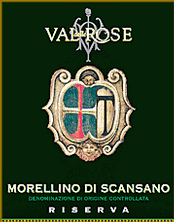 Val delle Rose 2009 Morellino di Scansano Riserva, Tuscany, Italy
($20) – Scansano is situated in the Maremma, southwest of Montalcino
toward the coast of Tuscany. The region is warm, so the sangiovese (called
“morellino” in the area) always ripens, and in good years it can be rich and
voluptuous, distinctly different from the sangiovese-based wines of the Chianti
district. Because the region is tucked away far from any major village or city,
the wines were undiscovered until recently, and land has been cheap to purchase
compared to the Chianti Classico region and the better areas of Montalcino,
where Brunello is made. This Cecchi Val delle Rose property produces exceptional
Morellino di Scansano. This vintage is lush and pure, with soft tannins and a
rich texture on the palate. Aromas of ripe cherries and spice are appealing and
typical of the wine. Tremendous value! Rating:
90. Val delle Rose 2009 Morellino di Scansano Riserva, Tuscany, Italy
($20) – Scansano is situated in the Maremma, southwest of Montalcino
toward the coast of Tuscany. The region is warm, so the sangiovese (called
“morellino” in the area) always ripens, and in good years it can be rich and
voluptuous, distinctly different from the sangiovese-based wines of the Chianti
district. Because the region is tucked away far from any major village or city,
the wines were undiscovered until recently, and land has been cheap to purchase
compared to the Chianti Classico region and the better areas of Montalcino,
where Brunello is made. This Cecchi Val delle Rose property produces exceptional
Morellino di Scansano. This vintage is lush and pure, with soft tannins and a
rich texture on the palate. Aromas of ripe cherries and spice are appealing and
typical of the wine. Tremendous value! Rating:
90.
Villa Cerna 2008 Chianti Classico Riserva, Tuscany,
Italy ($24) – This was among my go-to Chiantis over the past year, a
sleek, beautifully structured Chianti that is likely to improve over the next
three to seven years although more than likely most of it will be drunk long
before it reaches its peak. This wine exhibits freshness and richness on the
palate, with a spicy nose, nicely integrated tannins and good acidity without
the telltale bite for which Chianti is renowned. Notes of black cherry and dried
herbs come through in this seamless beauty. Villa Cerna is a single-estate,
single-vineyard wine from Castellina, a lovely village situated in the center of
the Chianti Classico region between the major cities of Florence and Siena. The
vineyards are planted to a number of new clones of sangiovese that have emerged
in many trials as superior clones. The proof, as always, is in the bottle.
Rating: 94.
Cecchi 2007 Coevo, Toscana IGT,
Italy ($58) – Cecchi’s hot-rod “Super Tuscan” is a tip of the hat to
the undeniable fact that some so-called international grape varieties, typically
merlot and cabernet sauvignon, thrive in the hilly, arid climate of Tuscany. The
blend is 50 percent sangiovese with 20 percent merlot, 20 percent petit verdot
and 10 percent cabernet sauvignon. The wine is aged in small French oak barrels
and it has the decided personality of a Bordeaux-style blend, although the large
percentage of sangiovese lends a bit of the Tuscan character (aromas of black
cherry, fresh acidity). This vintage exhibits an enticing floral note of
violets, with hints of spice, black fruits and supple tannins that deliver a
soft mouthfeel that marries nicely with the richness of the fruit.
Rating: 91.
Follow Robert on Twitter at
@wineguru.
Posted by Robert Whitley at 10:32 AM
|
|
February 5, 2013
Creators Syndicate
Ever sit down in an unfamiliar restaurant and
order a dish you don’t know and feel somewhat comforted when the server mutters
“perfect” as he/she moves on to the next guest? You are feeling good about your
selection until the person beside you orders something entirely different and
the same he/she server mutters “perfect” again.
You suddenly have the
sinking feeling that if everything is special, then nothing is. It is that way
this week as I field suggestions from overly enthusiast publicists on the merits
of an endless variety of wines for Valentine’s Day.
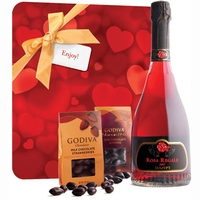 Did you
know that carmenere from Chile is the “perfect” pairing with a box Valentine’s
Day chocolates? Neither did I, but so I am told. And here all along I was
thinking it was zinfandel from Amador. Or was it pinot noir from
Carneros? Did you
know that carmenere from Chile is the “perfect” pairing with a box Valentine’s
Day chocolates? Neither did I, but so I am told. And here all along I was
thinking it was zinfandel from Amador. Or was it pinot noir from
Carneros?
The head is spinning, about to explode as I consider the myriad
possibilities. Of course, it’s mostly nonsense, these silly “perfect”
suggestions that will make you someone’s hero on this day of
romance.
Cupid I’m not, but I can tell you unequivocally chocolate does
not do much to flatter any dry red wine I can think of. Yes, you might pick up a
hint of mocha in a rich Napa Valley cabernet sauvignon. That doesn’t mean it
will taste good with a truffle from Godiva. Quite the opposite is likely to
occur as the sweetness of the confection makes the wine taste tart and
sour.
Ah, you say, but how about Champagne? Isn’t that supposed to be a
natural with chocolate? Only if you pop the cork on a demi-sec, but even that’s
a stretch. Most demi-sec methode champenoise, while somewhat sweet, isn’t quite
sweet enough to stand up to a rich chocolate confection. The rule of thumb for
this sort of match is to serve a wine that is sweeter than the
confection.
So in a perfect world, here’s what I would consider optimal
Valentine’s wines for Valentine’s treats:
Rosa Regale 2011
Brachetto d’Aqui ($25) is my go-to wine for Valentine’s Day. This
sweet, frothy red wine from northern Italy smells and tastes like fresh
raspberries and strawberries, flavors that sing when paired with chocolate.
Though it is sweet, Rosa Regale finishes clean, with a bit of palate-cleansing
tannin. It was a favorite at the 2013 Winemaker Challenge wine competition,
where it claimed a silver medal. There are other Brachetto bubblies out there,
and you should be adventuresome and try them, but Rosa Regale is among the best;
beautifully balanced and sure to please.
 Eberle
2011 Muscat Canelli, Paso Robles ($15) is a luscious white wine that
exhibits exotic floral aromas, with tropical notes and dried fruits on the
palate, balancing acidity and a clean, persistent finish. This wine, much like
the Rosa Regale, can be sipped as an aperitif or with dessert after a meal, or
even with pungent cheeses. Won a silver medal at 2013 Winemaker Challenge.
Winery owner Gary Eberle likes to serve it with cakes and fruit. Slightly
frizzante moscato from northen Italy’s Piedmont region is a reasonable
substitute. Eberle
2011 Muscat Canelli, Paso Robles ($15) is a luscious white wine that
exhibits exotic floral aromas, with tropical notes and dried fruits on the
palate, balancing acidity and a clean, persistent finish. This wine, much like
the Rosa Regale, can be sipped as an aperitif or with dessert after a meal, or
even with pungent cheeses. Won a silver medal at 2013 Winemaker Challenge.
Winery owner Gary Eberle likes to serve it with cakes and fruit. Slightly
frizzante moscato from northen Italy’s Piedmont region is a reasonable
substitute.
Inniskillin 2008 Riesling Icewine, Niagara Peninsula,
Canada ($80) was the Best of Show dessert wine at the 2012 Sommelier
Challenge wine competition. The sommeliers went bonkers over this wine and more
than likely would have voted it Wine of the Year had it not been up against one
of the greatest Champagnes ever made (Charles Heidsieck 1995 Blanc des
Millenaires) in the championship round. This is one of the most intensely
delicious wines you could ever taste, with mind-bending tropical aromas, and
notes of honey and spice. It will hold its own against any sweet confection
Cupid might deliver.
Quady 2010 ‘Essensia’ Orange Muscat,
California ($25) is a lightly fortified (15 percent alcohol by volume)
dessert wine that never disappoints. With aromas of orange blossom and stone
fruits, it is “perfect” with chocolate, as he/she might say. This grape variety
is grown in central California but is little known around the world, with a few
small plantings in France and Australia. It was Best of Show dessert wine at the
2012 San Diego International wine competition.
Rancho de Philo
Triple Cream Sherry, Rancho Cucamonga ($35) is one of the few sherries
produced in the United States that is on par with the finest sherry from Jerez,
Spain. It is made using the traditional solera technique with mission grapes
grown in the warm, dry climate of Rancho Cucamonga, east of Los Angeles near the
San Bernadino Mountains. It exhibits rich notes of toffee, nuts, raisins and
spice. This wine won a gold medal at the 2012 San Diego
International.
Perfect with chocolate.
Email comments to whitleyonwine@yahoo.com. Follow Robert
on Twitter at @wineguru.
Posted by Robert Whitley at 1:10 PM
|
|
February 2, 2013
Creators Syndicate
The wine blogosphere was all atwitter last week over a published report
revealing three large wine companies — E&J Gallo, Constellation and The Wine
Group — produce more than half of all the wine consumed in the United States.
Considering America drinks more wine — by volume and by value — than any
other nation in the world, the big three couldn't possibly quench the national
thirst with nifty handcrafted wines made in an idyllic small vineyard in the
heart of wine country.
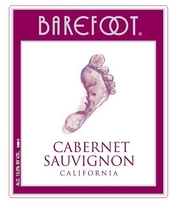 A whole bunch of it comes from vast vineyards that are farmed for
volume, news that's not really news but rather a fact of life that is rarely
discussed by those who worship at the altar of new French oak barrels and trendy
cult cabernets. A whole bunch of it comes from vast vineyards that are farmed for
volume, news that's not really news but rather a fact of life that is rarely
discussed by those who worship at the altar of new French oak barrels and trendy
cult cabernets.
Hello, most of America — indeed, most of the world — drinks inexpensive wine
produced in industrial facilities bulging with enormous stainless steel tanks
and all of the tricks of modern winemaking, so your wine will taste somewhat
like the more expensive juice when it's really not.
This is a problem? I think not. Don't get me wrong, I enjoy those special
bottles with their unique personalities and interesting narratives as much as
the next wine geek. But sometimes a wine is just an adult beverage (meaning
merely that it contains alcohol) that you would prefer over beer or a distilled
spirit. It usually doesn't have to be any more than that, though more discerning
consumers might like it to have a pleasant taste.
Consider the typical family that might enjoy a bottle of wine on the table
with dinner each night. If the average price of wine they drank was $30, their
annual budget for wine would come to $10,950, a number that would be difficult
for many families to swallow. So make that average cost $20 per bottle, but the
$7,300 tab would still be difficult to swallow for many.
That's why the majority of wine consumed in the U.S. costs $10 or less.
That's what the average person is willing to pay, or what he or she can afford
on a daily basis.
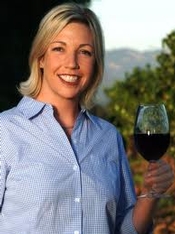 So are we a nation of
rubes, drinking cheap swill because we don't know any better, unwilling to pay
the price for a decent bottle of wine? No, we aren't. We are no different than
the inhabitants of such wine-savvy nations as France, Italy and Spain. So are we a nation of
rubes, drinking cheap swill because we don't know any better, unwilling to pay
the price for a decent bottle of wine? No, we aren't. We are no different than
the inhabitants of such wine-savvy nations as France, Italy and Spain.
Should you happen to vacation in Paris at some point, you will notice that
it's almost impossible to find a classified-growth Bordeaux or a Burgundy cru in
most bistros and brasseries. What you will find are the much less expensive
wines of the Loire Valley, the Rhone Valley and the Languedoc. Out in the
countryside, it's even more difficult to find top-notch Bordeaux and Burgundy.
Travel to Italy, and you will meet people in small villages who still take
jugs to the back door of their favorite local wineries, filling them with
inexpensive wine that failed to make the cut so it was never bottled.
Spaniards are notorious for their fondness for Rioja "crianza," which is the
cheapest Rioja you can buy; and also inexpensive wines from La Mancha, Jumilla
and Navarra.
It is hardly a crime against the culture to find beauty in a wine made for
the masses, and with that in mind I give you a winning wine from the recent
Winemaker Challenge in San Diego. A panel of three winemakers evaluated cabernet
sauvignons priced at $10 or less and awarded a Platinum medal to the non-vintage
Barefoot Cellars Cabernet Sauvignon, California ($6.99).
They all agreed, it didn't stand a chance in the championships against the
2009 Cakebread Cellars Dancing Bear Ranch Cabernet Sauvignon, Howell Mountain
($110), which was voted Best of Class Cabernet Sauvignon, but they all found it
to be delicious and a winemaking achievement within its price class. I imagine
it was produced in enormous volume; perhaps millions of cases.
But if you can buy cheap and good, that seems to me a winning combination, no
matter what the cognoscenti think.
Email comments to whitleyonwine@yahoo.com and follow
Robert on Twitter @wineguru.
Posted by Robert Whitley at 10:23 AM
|
|
 |
|